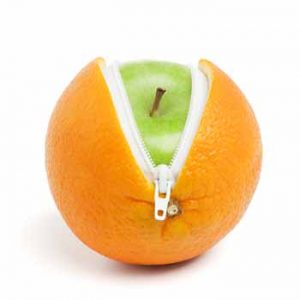
More evidence that low-calorie sweeteners are bad for your health
Studies show that artificial sweeteners can raise the risk of hypertension, metabolic syndrome, type 2 diabetes and heart disease, including stroke.

I’d like to ask a serious question about asking serious questions.
At the recent meeting of the American Chemical Society a new packaging material made from the milk protein casein was unveiled. Mix casein with some citrus pectin and glycerol and you can produce an eco-friendly film that looks and feels like plastic wrap and performs mostly the same functions.
Sounds interesting, but how much more interesting might the enthusiastic retweets and reposts over the last week have looked if everyone had just taken a breath and asked a few more questions?
Here’s some to get you started:
Does casein-based packaging replace plastic? No. Cardboard and/or plastic will still be used in supermarket displays to keep individual servings clean and dry. Foods shipped around the world would still need to be cosseted in all the same wood, cardboard and plastic in order for them not to spoil or be damaged.
Eco-friendly?
Is it really safe for the environment? Especially our waterways?
One of the reasons why milk spillage into waterways is so devastating is that it provides food for naturally occurring aquatic bacteria, fungi and algae. Farmers are fined heavily for dumping milk into waterways because it encourages the growth of these organisms ultimately starving the water of oxygen and killing off fish and other aquatic species. If we throw tonnes of milk-based ‘plastic’ into the oceans what will the result be? How might it alter ecosystems there?
To entice people not to throw away the packaging – which has little or no taste – manufacturers are considering adding flavours to it. But what will these flavours be made of? Are they healthy? Are they safe? Others suggest that vitamins or probiotics could be added to make them health-enhancing – yet another example of our allegiance to scattergun supplementation and fortification.
Healthy & sustainable?
Casein films are not as water-tight as plastic. The fact that they eventually dissolve in water means they are most likely to be useful for single serve pouches of coffee or soup.
It also places limits on the types of environments they can be stored in before the food is consumed. If casein packaged products require more specialist storage – which may be more energy intensive – can we truly say it is more eco-friendly?
In addition to making bioplastic films, a sprayable version could be used on cereals to keep them crunchy in milk. We are told this is a much healthier alternative to sugar coatings, but is it? How many calories does it have? How much protein does it add to our already protein-heavy diets? What about people who have a milk allergy – one of the most common food allergies. They are reacting to either casein or whey.
Proponents say that casein feedstock comes from a renewable, sustainable source. Yes indeed it does – if you count large, cruel, polluting industrialised dairy farms as sustainable.
In fact, the supply of casein is not unlimited and this makes it expensive. This combined with complex manufacturing procedures means that it is likely to add cost onto packaged food. This cost will be passed onto the consumer.
Who profits?
While casein packaging could be a profit spinner for chemical companies, in all likelihood dairy farmers will not benefit because farmers are paid for their liquid milk which – disgracefully – is considered a ‘low value’ food item.
To make it ‘high value’ the companies that buy it change it into something else – cheese, yoghurt, probiotic drinks, ice cream, milk fats and dried milk (which are used in processed foods) and now food packaging.
The wrong solution
If I refuse to be wide-eyed about such innovations it is because I have seen too many of them fail. Worse they never address the real issues. In this case the issue is a globalised, commoditised food system that sends food all around the world and therefore requires specialist food packaging.
The solution isn’t milk- or GMO maize-based bioplastics, or hard plastics made from sugar. The solution is to stop making and buying foods that require packaging; to help people get back to buying fresh food that doesn’t need a label or a serving suggestion – or misleading nutritional advice.
Because milk proteins are considered generally recognised as safe (GRAS) there will likely be few to no studies required to ensure that these coatings are actually safe to eat or safe to use. If they bring up problems we won’t know about it until someone gets sick or, more specifically, someone’s bottom line is affected.
I applaud everyone who has a feel for nature and the environment and who is trying – often in the face of difficult odds – to ‘do good’. But before we jump on yet another eco bandwagon let’s ask sensible questions and demand sensible answers.
Pat Thomas, Editor

Please subscribe me to your newsletter mailing list. I have read the
privacy statement